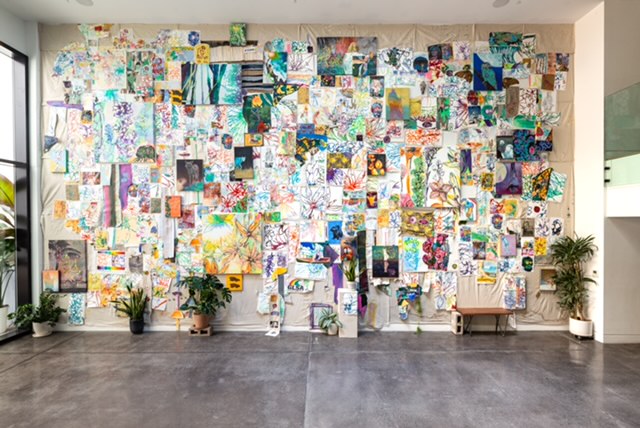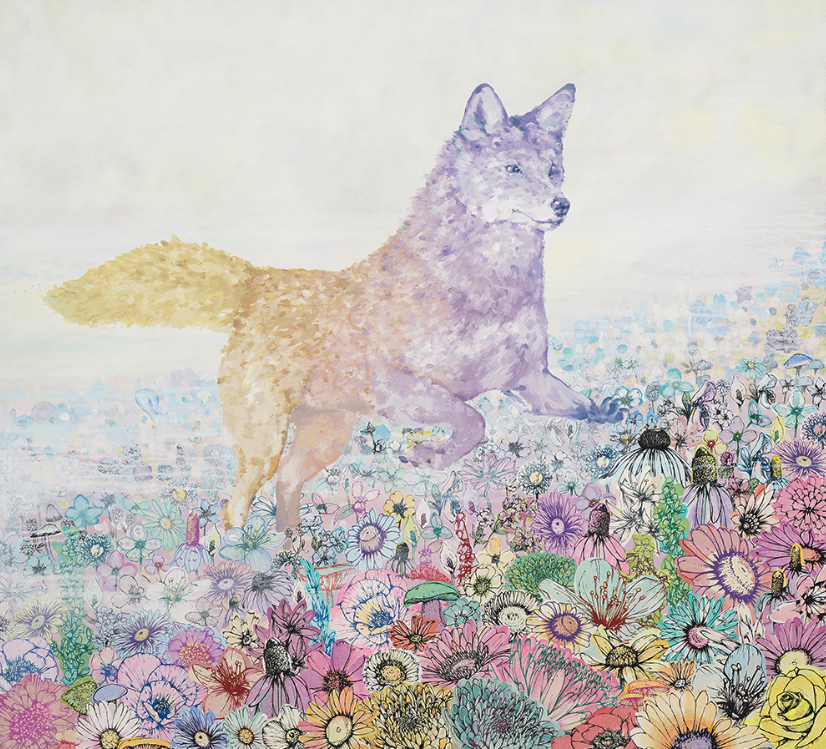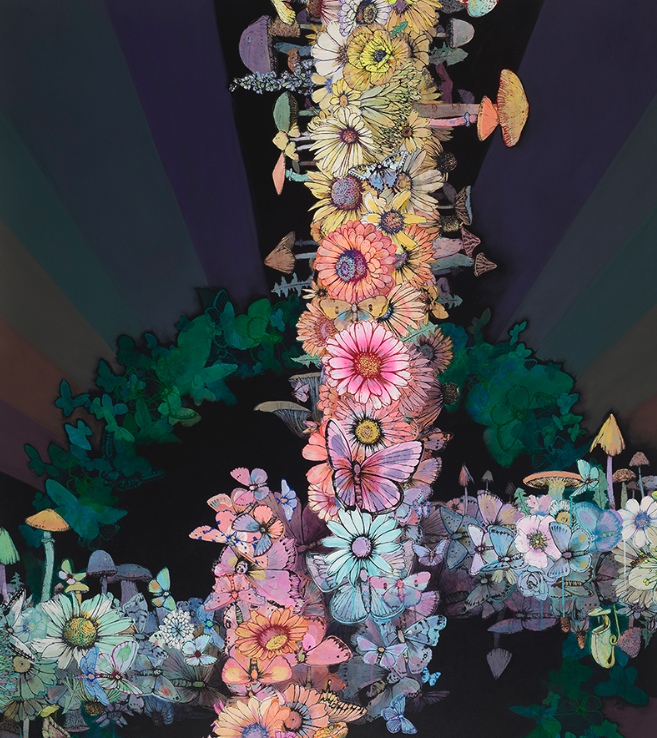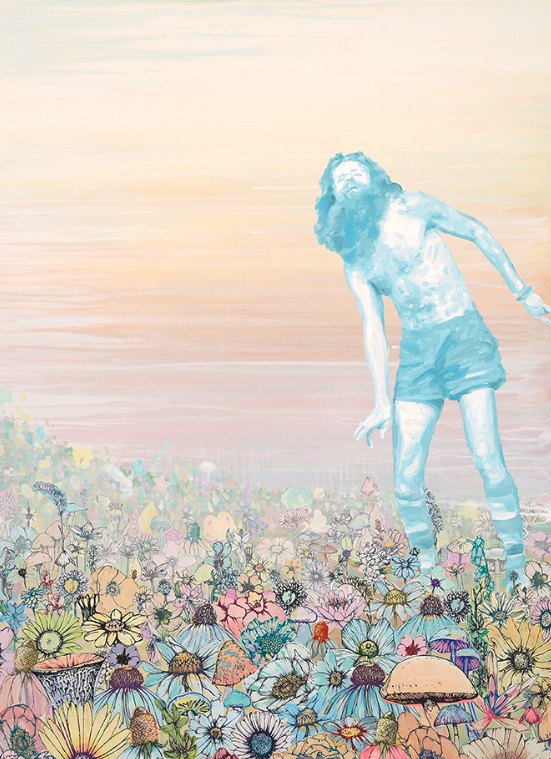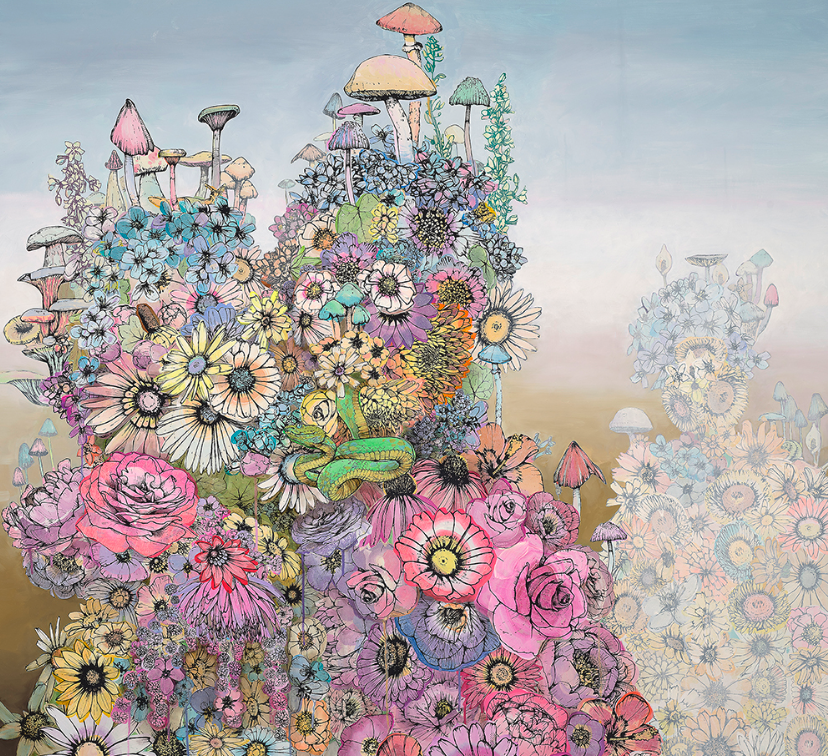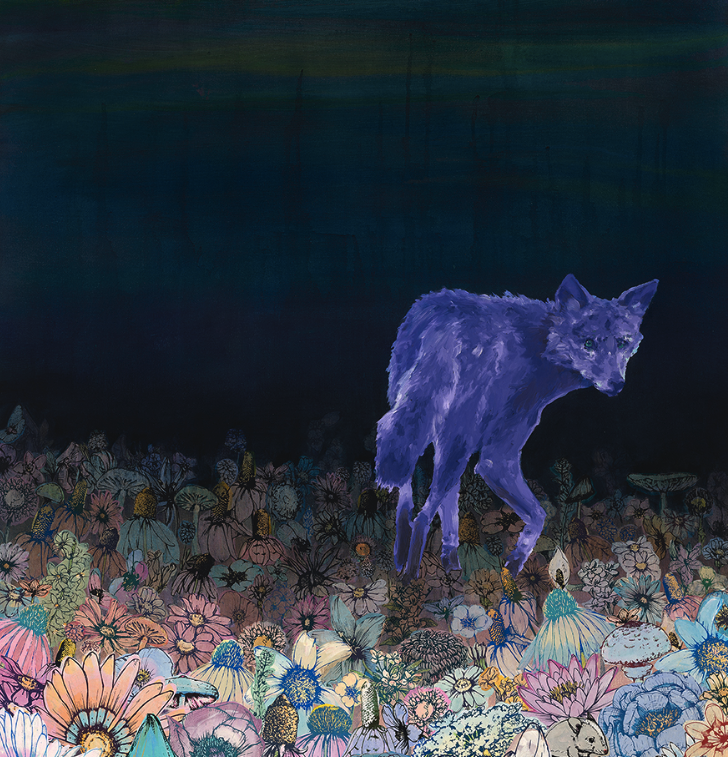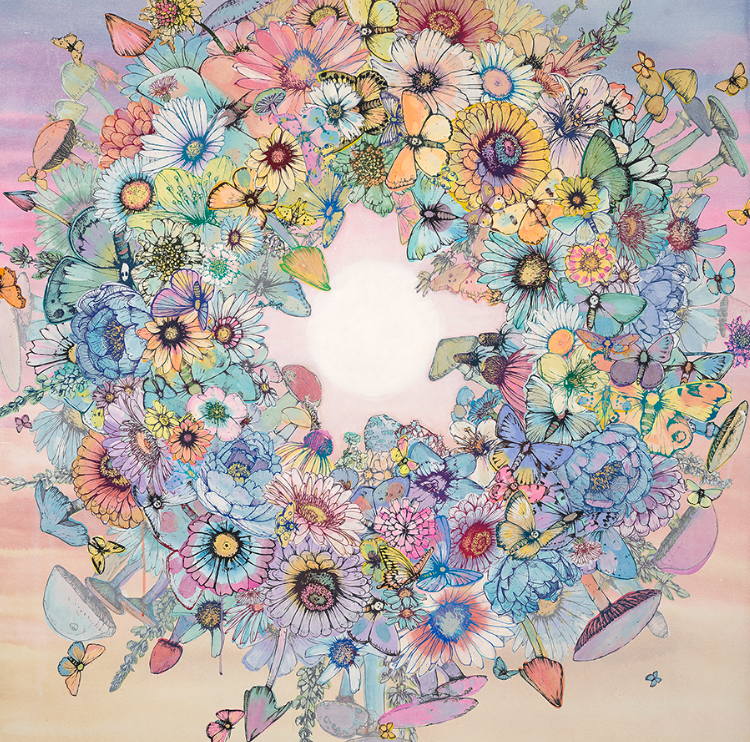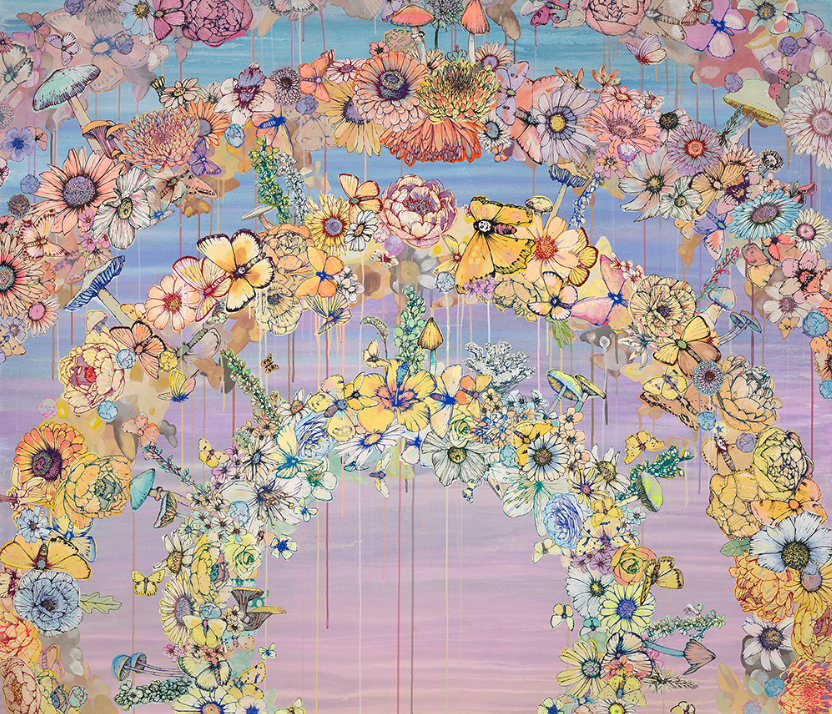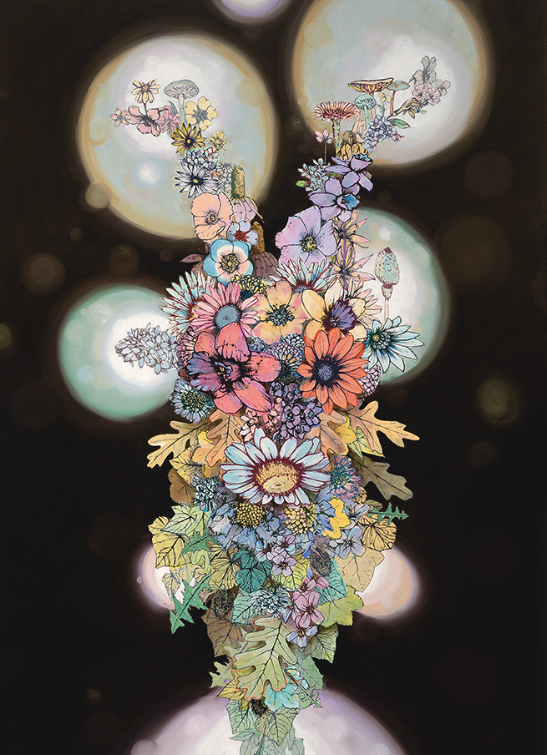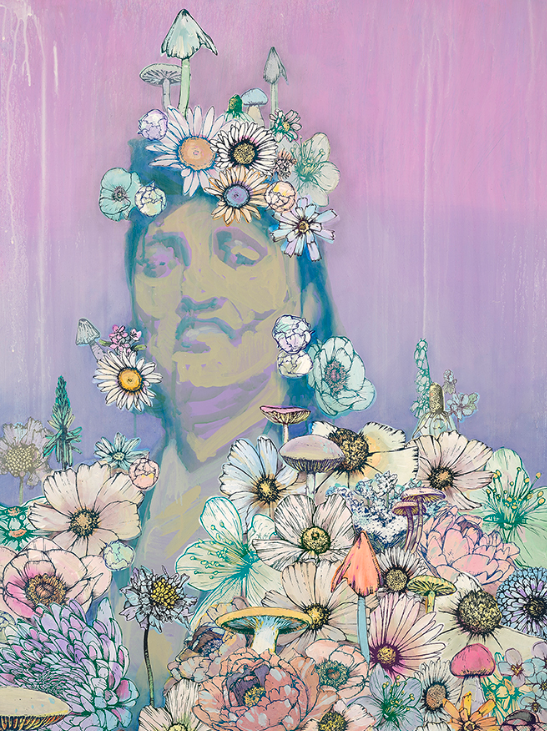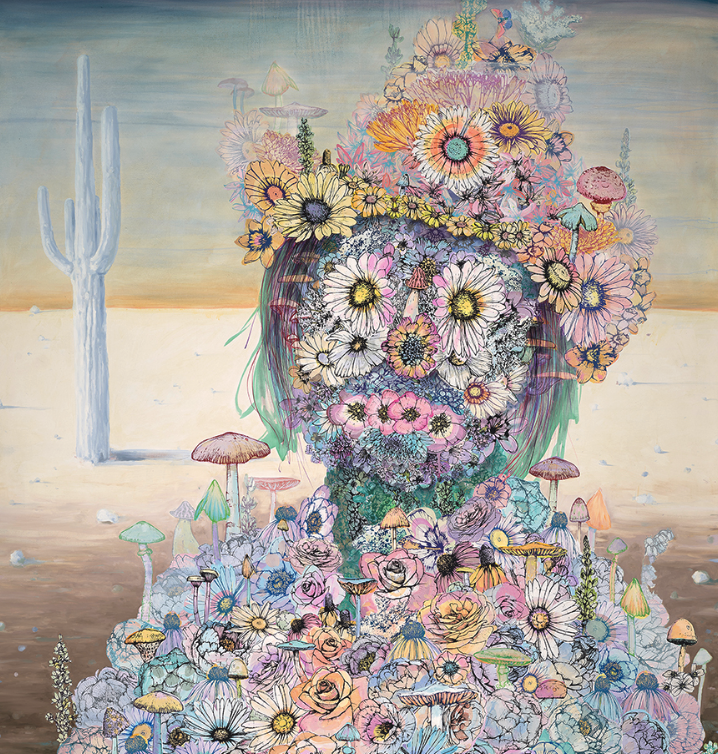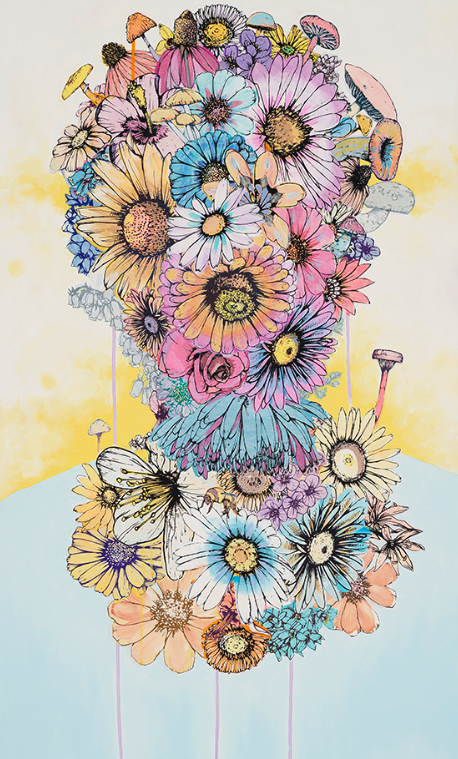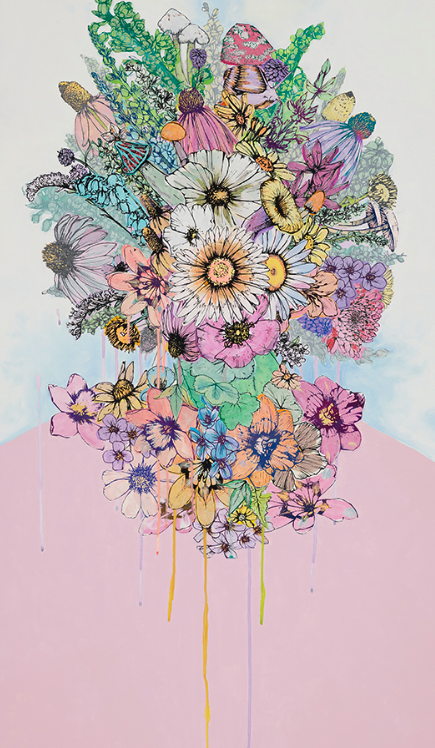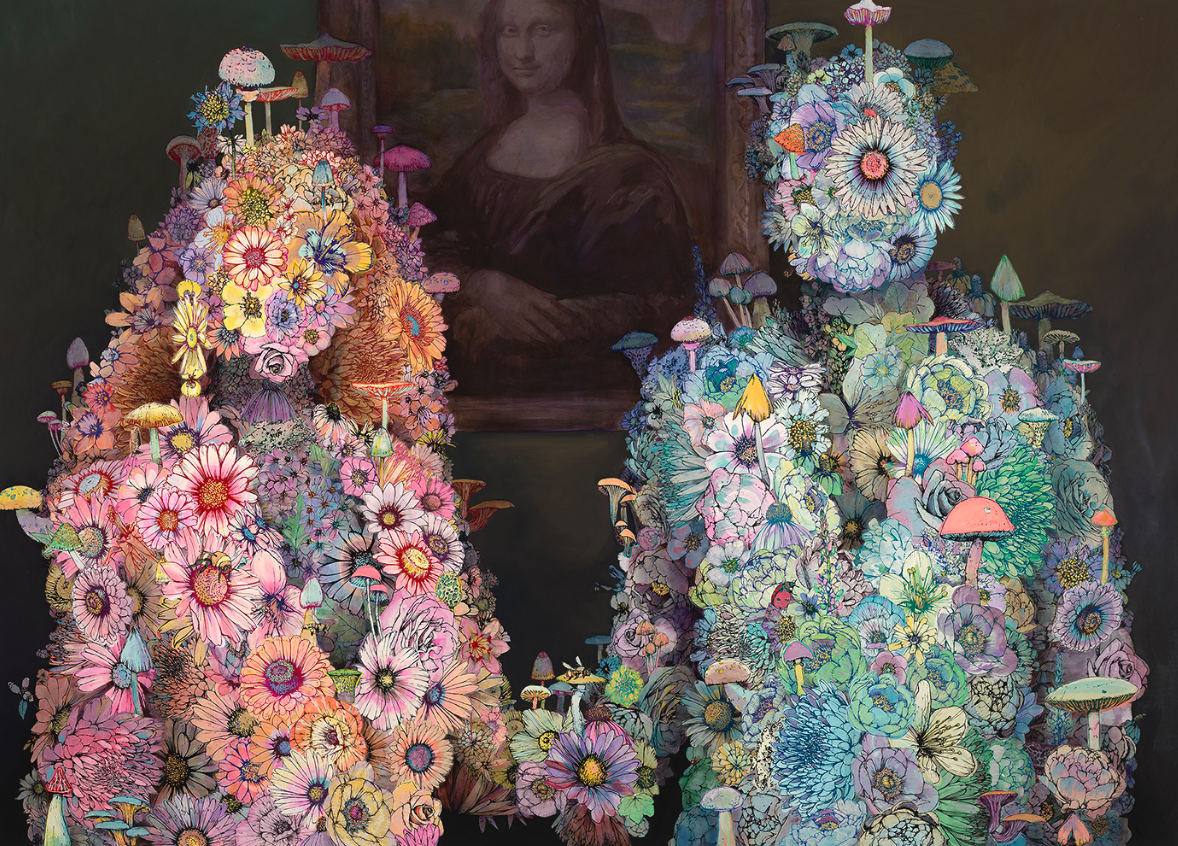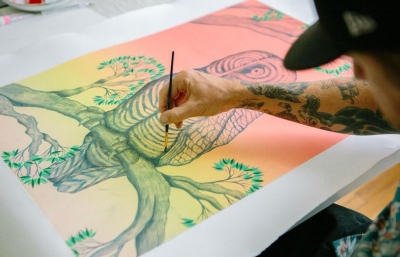“Overall, I think I have just ended up back where I started: blissfully lost in the wilderness of society, like a coyote in the dump.” So Sage Vaughn told us on the eve of his new solo show, Second Nature, now on view at Chandran Gallery in San Francisco. The themes that Vaughn focuses on here are more an antithesis of control. Survival and nature are being rethought, reimagined into what Vaughn sees as a more natural interpretation. “Peace and Love is not natural without War and Savagery,” Vaughn states. “That’s why the beauty in nature is so much more profound. Nature is chaos, a vast savage and beautiful mess of perfection, fragile and dangerous, fleeting and infinite.”
Known in the past for his circular and dripping paintings of butterflies and birds left in solitary urban environments, Vaughn’s newest works over the past 6 years have focused on patterns and constellations of flowers, meditations on not only how we can control ideas of beauty and chaos, but insights into the patterns of personal life, the unseen mappings of our universe, and how we find ourselves connecting dots and moving forward without losing a sense of self. The newest works in Second Nature form more figurative elements, flowers composed as humans, animals posed into the gardens or clusters of plants and organic matter blended over his signature circular works. Second Nature will be presented on both floors of the gallery, and runs through August 29, 2019. 
Within the newest works in Second Nature, themes begin to emerge. That of paganism, survival, effigy, fecund beauty and alternative healing. When the garden works began to emerge in Vaughn’s visual language over 6 years ago, there was an attempt to distill control over the chaos in the artist’s life. Composing gardens, cultivating wildflowers into patterns and finite patches of color, Vaughn began to see patterns of his own life, connections to his older works and to the works of other artists, past and present: birds to butterflies to flowers. Using constellation formations and Google maps to lay out vast fields of miniscule flowers, Sage began to use his new visual language to re-interpret historical tropes in art history, such as Memento Mori or Goya’s The Disasters of War. And yet for Second Nature, Vaughn has gone back to nature, searching for artifacts and strange discoveries from a civilized and uncivilized past, and processing it all in alchemic experiments of beauty.
Also within the show is a continuation of the circular forms Vaughn has long been working with. The newest iterations contain more species and a new encapsulated dynamism. “They act as divinations of some sort,” Vaughn saysm, “some way of finding meaning or beauty within the chaos. Like a mystic throwing bones or reading tea leaves, I returned to this practice and see new compositions each time, and I hope others do as well. I truly do enjoy exploring different color combinations and the various emotive qualities they can elicit.

